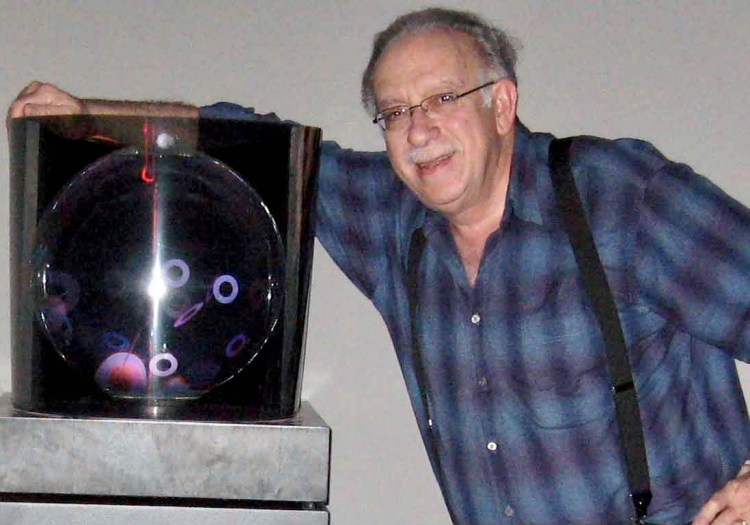Adam Peiperl, an artist, scientist and language translator whose kinetic light sculptures are displayed in museums, galleries and private homes around the world, died Nov. 29 at a hospital in Washington. He was 84.
The cause was complications following surgery for a torn aorta, said a son, Maury Peiperl.
Peiperl (pronounced “PIE-pearl”) was born in Poland to Jewish parents and survived the Holocaust with his family. Ten years after the war, having fled to the United States with his parents, Peiperl was studying chemistry at George Washington University in Washington.
From these studies came an idea that he could translate science into art by using polarized light to bring rainbow colors out of transparent plastic shapes. In the late 1960s he used this process to create kinetic, or moving, sculptures.
In 1968, this art work was displayed at the Corcoran Gallery of Art, where it was noticed by officers of other galleries. Over the next 50 years, Peiperl’s kinetic art would be displayed at the Hirshhorn, Kreeger and other galleries in Washington and at art spaces in New York, Chicago, Philadelphia and in Europe.
Writing in The Washington Post in 1978, arts writer Jo Ann Lewis noted the “soothing and hypnotic” properties of Peiperl’s forms.
GW Magazine, an alumni publication, wrote that Peiperl “creates rainbow-like effects in a box-like enclosure that has a window in the front. To do it, he uses plastic sculptures and polarizers, which are like the lenses in a pair of sunglasses and block certain waves of light while letting others through.
“He places the sculptures – symmetric and asymmetric forms that are generally up to about 11 inches tall and five inches wide – on a rotating platform in the enclosure,” the magazine continued. “A lightbulb hidden in the back of the enclosure lights the setup, and as the forms spin, the viewer can see the entire color spectrum because of the polarized light.”
His art, Peiperl joked to the magazine, “puts viewers to sleep.”
Adam Peiperl, who lived in Silver Spring, Maryland, was born June 4, 1935, in Sosnowiec, Poland. He was 4 when Nazi Germany invaded Poland.
Maury Pieperl said his father survived the Holocaust through a combination of “luck, the kindness of strangers,” and his parents’ street savvy. His father was one of a group of Jewish prisoners being marched off to what he suspected was a death camp. He faked a fainting spell and collapsed on the street, where the Nazi guards left him. When they were gone, he got up and walked away.
When the war ended, the Peiperl family fled Poland, living in a displaced persons camp in Austria. Adam Peiperl went to high school in Paris, then in 1953 came to the United States and settled in Washington. He graduated from George Washington University in 1957.
He was a chemist at what was then the National Bureau of Standards and then was a freelance translator of Russian scientific literature into English from 1963 to 1989.
In 1958, he married Martha Dorf. In addition to his wife, of Silver Spring, survivors include three children, Maury Peiperl of Fairfax County, Virginia, Larry Peiperl of San Francisco, and Linda Warren of Charlottesville, Virginia; and four grandchildren.
Copy the Story LinkComments are not available on this story.
Send questions/comments to the editors.


